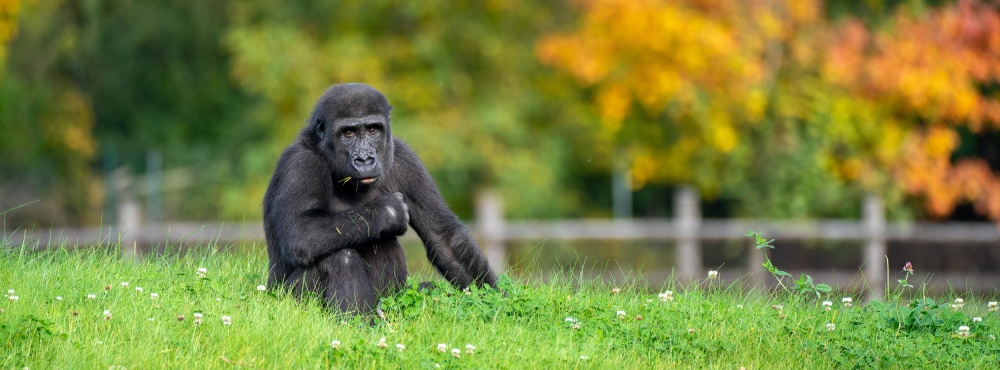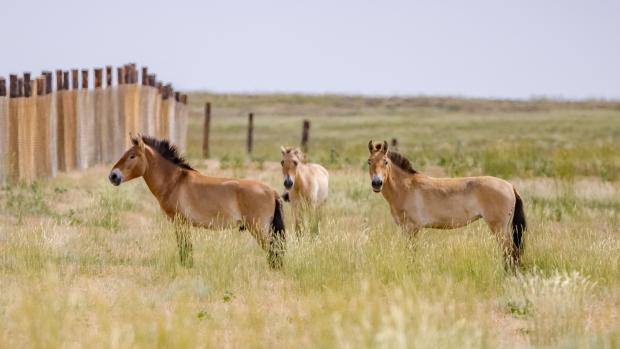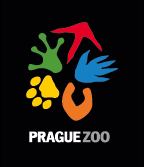Przewalski's Horses Doing Well in Kazakhstan and Have Just Mated

The Przewalski's horses that Prague Zoo transported to Kazakhstan at the beginning of June, are adapting well to the local conditions. Both groups are now fully using the acclimatization pens and have also learned to enter the ponds and drink from them. Likewise, all seven horses have also become accustomed to one another, which is key to creating a healthy social structure within the local population. Prague Zoo’s in-situ monitoring team reports that the stallion, Zorro, has even tried to mate with the mares.
 The first Przewalski's horses in central Kazakhstan after hundreds of years. Pictured here are three Czech natives: the stallion Zorro on the left and the mares Zeta II, in the middle, and Ypsilonka on the right. Photo Miroslav Bobek, Prague Zoo
The first Przewalski's horses in central Kazakhstan after hundreds of years. Pictured here are three Czech natives: the stallion Zorro on the left and the mares Zeta II, in the middle, and Ypsilonka on the right. Photo Miroslav Bobek, Prague Zoo
Miroslav Bobek, Prague Zoo’s director, said, “Two weeks after the transport, the situation in the Golden Steppe is looking very promising. The key element is for Zorro, the young stallion, to fully understand his role and become the dominant male of the harem. So far, he has successfully mated with Zeta II and Ypsilonka. For now, the horses have a shelter, but over time this will be closed off so that they get more and more used to life in the open. Winter will be pivotal, as we need to find out if the horses can find food under the snow cover. By next spring at the latest, we will start a soft release, i.e. the gates of these huge enclosures will be opened and they will head off into the wilds at their own pace.”
Currently one of the enclosures is home to the aforementioned Zorro, who is three, Zeta II, who is the same age, and Ypsilonka, who’s a year older. All of them are from Prague Zoo’s breeding station for Przewalski’s in Dolní Dobřejov. The neighbouring enclosure has four mares who came on the second plane from Berlin: Tessa, who’s five, Wespe and Umbra, both four, and the youngest of all seven horses, three-year-old Sary. Next spring another stallion will join the latter group to ensure the population is genetically diverse from the outset.
Bobek went on to say, “There are several levels to the significance of returning the last wild horses to Kazakhstan. For one, it is a species threatened with extinction that has returned to its historical range. Secondly, this large ungulate will help the entire ecosystem - its droppings will spread plant seeds, fertilize the steppe soil, and, thanks to their large hooves, allow more water to percolate into the vegetation under the snow in winter. Last, but not least, there is a symbolic level connected to the local inhabitants’ culture and their search for a distinctive national identity.”
Przewalski's horses have returned to the steppes of central Kazakhstan after a hiatus of hundreds of years. In all, Prague Zoo wants to transport 40 horses to the area over the next four years. This number should be just right to ensure a viable population that will continue to reproduce without human intervention, similar to the situation in western Mongolia. The plan is to transport more Przewalski's horses to Kazakhstan in May or June next year.
ZOOPRAHA.CZ
Contacts
- The Prague zoological garden
U Trojskeho zamku 120/3
171 00 Praha 7
Phone.: (+420) 296 112 230 (public relations department)
e-mail: zoopraha@zoopraha.cz
Others








